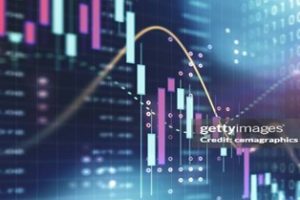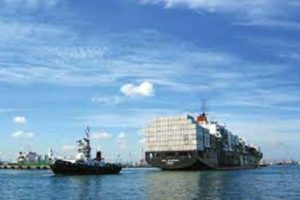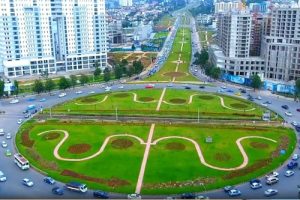
Studies indicate that Ethiopia has abundant renewable energy sources that can transform the sector’s landscape. Hydropower, solar, wind, and geothermal can be mentioned in this regard. Assela 2 wind farm project is among these renewable energy sources. It is a 150MW onshore wind power project. It is planned in Oromia, Ethiopia. According to Global Data, who tracks and profiles over 170,000 power plants worldwide, the project is currently at the dormant stage. It will be developed in a single phase.
Even though the nation is rich in these resources, it is lagging behind in developing and using partly because of the scarcity of finance, technology and human resource but mostly because of lack of initiation. However, the government has strived to exploit the resources in the past years and registered promising results. In real terms but, as per the resources available and the demand to energy, the effort exerted had been like a turtle walking.
The nation’s potential attracts foreign investors to involve in exploration and exploitation of the resources. To this end, the Ethiopian Electric power (EEP) made an agreement recently with the Lebanese based company Dar Al-Handasah Shair and Partners a leading international multidisciplinary consulting organization in engineering, architecture, planning, environment, and project management for accomplishing the Assela Wind Farm project located in Arsi Zone of Oromia region.
While making an interview with local media, Tariq Naji Al-Qanni, Director of Operations of the company said that the company has previously completed a number of projects for Ethiopian Airlines, including designs for the Skylight Hotel and several terminals as well as a recently-finalized e-commerce center for the Ethiopian.
Since its founding as a specialized engineering company in Beirut in 1956, Dar has made its name with a series of large-scale projects spanning dozens of countries in the Middle East and Africa. While mentioning his company’s activities on the project, Al-Qanni said that the project is the second one with EEP. It falls under the energy sector, namely renewable energy. EEP is striving to be number one renewable energy provider in the region.
The project consists of wind farms and it is viable kind of project the company engaged in. Exploiting renewable energy and particularly in wind energy is part of the company’s endeavor. He also reiterated that his company is engaged in consulting works known for its promotion of sustainability.
In addition to ensuring sustainability, renewable energy projects such as PV (photovoltaic) or [solar], wind farms or hydropower are economically viable and support Ethiopia’s efforts to build climate resilient green economy. The project, not only transforms the nation’s energy sector, but also helps the company to fulfill its vision of transforming the world into using renewable energy resources as opposed to fossil fuel in general.
As to him, the Assela wind farm project is actually an existing project. It was started years back but has not been finalized. His company came to support EEP in the last stage of the wind project and will work on the accomplishing task and also for the continuation of the project.
It also reviews the design, administers the contract, support and provides services, and oversees the successful completion of the project in accordance with the contract and in accordance with the specifications and aspirations of EEP. The company understood from the discussions that EEP is well capable of handling the project.
The company has the necessary technical knowledge helpful to oversee the project in a highly efficient manner. Not only in wind farms, the company has also had discussions with EEP officials on geothermal and strives to make the country the main source of green energy in East Africa. The Completion of the wind project will be expected between 2025 and 2026, hopefully earlier.
As to him, project cost is just one challenge but it has been evolving very rapidly. The same thing goes for efficiency, which is evolving with time. Year after year, these improvements are helping to tap into the energy market. If they are not improving, they would die out of the market. But what is happening is not dying out. What is seen today is the popping up of renewable energy in every country. The good thing is all stakeholders are learning and cooperating on how to maximize the benefits of renewable energy.
As to Al-Qanni, the challenges of renewable energy are not specific to Ethiopia or African countries. It is a global challenge. Similar challenges are common in Europe, North America and Australia. It can be possible that replacing fossil fuels with renewable energy.
But, the more the pressure on fossil fuel energy consumption is reduced, the better the overall impact on the environment. That is why countries have made their number one choice of cultivating renewable energy sources for their energy demand.
It is the most efficient approach to build a wind farm near in a certain location to cover some demands. And in some other places one might need PV farms. And in some other areas it is possible to exploit geothermal. It really depends on the need, function, location and the resources available in the country.
After the completion of the project, the electric power generated from the wind farm will be connected to the national grid and accelerates the nation’s energy diversification and no more depending on a single energy source.
As it is understood, currently, Ethiopia derives about 85% of its modern energy from hydropower. Renewable energy to Ethiopia is essential because it aspires to develop Climate Resilient Green Economy which was launched in 2007.
According to energy experts, for the country which is heavily vulnerable to continuous drought and relying heavily on hydropower will have its own demerits. In time of extreme weather condition when drought occurs, the rain water which flows to the river that destined to the dam highly decreases which in turn declines the dam’s electric power generation capacity.
To the other extreme, during the rainy season, the overflow of water in to the dam might destroy the dam’s electrical equipments and disrupt its power generation process. Therefore, diversifying the energy sources can help to minimize the risk. This is what EEP is doing. If something risky happens, the country will have backup coming from other sources.
While reflecting his view on the tariffs issues that might be required from the company, Al-Qanni said that energy tariffs that attract private investors are a heated debate happening everywhere. For example, the company stayed in Jordan ten years and the matter is debatable. These are long-term commitments that the government is supposed to be making. The number of variables and unknowns associated with this long term commitment are scary. There are a lot of responsibilities and liabilities on the shoulders of those who are making the decisions. This is a topic debatable in every country. “Of course, as time passes, we are creating the knowledge and data required to make better decisions,” he said.
It is a challenge and no one denies that in every country, energy tariffs are hot issues when trying to attract investors. Energy is a long-term investment. For investors, it is difficult to commit investment without deep study of all variables over a long time, and conducting thorough analysis. Governments also do the same to make the commitment.
“But Ethiopia is successful in attracting investors and stakeholders and the company is one of them. Had the government been pushing away international organizations, we would not have been here,” Al-Qanni said.
Al-Qanni added that Ethiopia has unlimited potential in renewable energy. EEP has already started exporting energy to many countries such as Kenya, Sudan, Tanzania, South Sudan and others. It has become a source of revenue. So it is happening. It is generating foreign currency.
Many other projects are also happening in Africa. So there is no limit, given the huge energy demand in Africa. Using different mechanisms, developing countries like Ethiopia can even supply energy to countries far away.
According to Al-Qanni, the first involvement of his company in Ethiopia was in the designing of EEP headquarters at Mexico Square, Addis Ababa. The company completed the concept design for the headquarters and, currently it is doing the detail design. It will have more than 60 floors. It will be the tallest building in the city. His company is still in discussions with the client and the tower will have green energy sources of its own.
BY ABEBE WOLDEGIORGIS
THE ETHIOPIAN HERALD WEDNESDAY 12 JUNE 2024





